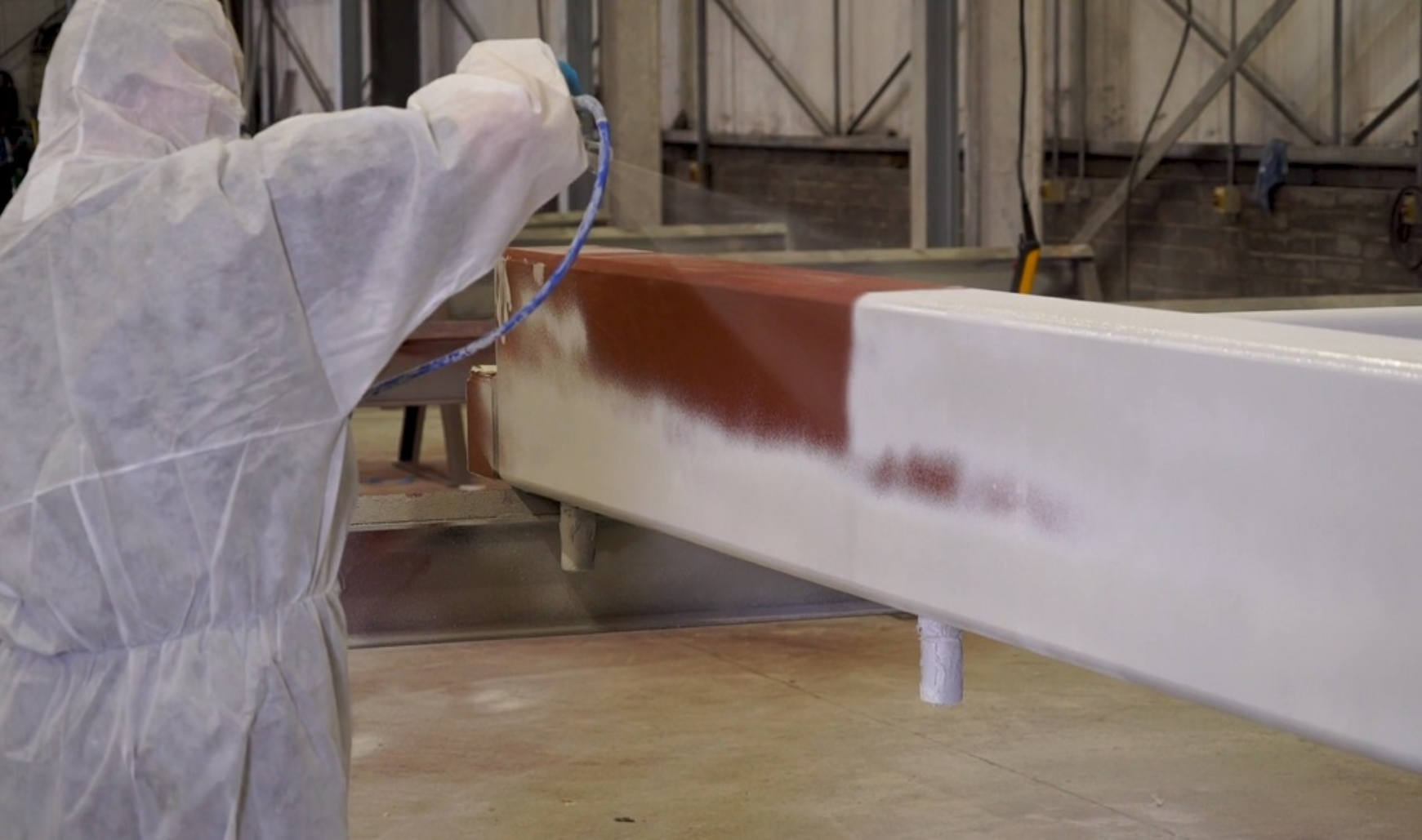Introduction
Fire safety is a critical factor in building design and construction. Intumescent paint is a key material that enhances fire protection in modern buildings. Applied as a coating to structural elements, this paint expands when exposed to high temperatures, forming an insulating barrier that slows down heat transfer and structural damage. This fire-retardant solution is widely used in commercial, industrial, and residential projects to improve safety and compliance with fire codes.
How Intumescent Paint Works
Intumescent paint is engineered with specific chemicals that react when exposed to extreme heat. When temperatures reach a certain threshold, the paint undergoes a chemical transformation, expanding into a foam-like layer that provides insulation and delays the effects of fire on structural components.
Key Properties of Intumescent Paint:
- Expands up to 50 times its original thickness when heated.
- Forms a protective char layer that reduces heat transfer.
- Slows down the weakening of structural materials during a fire.
- Can be applied to steel, wood, and concrete surfaces.
- Available in different formulations for varying fire resistance requirements.
Application in Building Structures
Intumescent paint is widely used to coat structural elements such as:
1. Steel Framework
Steel loses strength rapidly when exposed to high temperatures. Intumescent coatings help maintain structural integrity by delaying heat penetration, providing crucial time for evacuation and fire suppression.
2. Wooden Structures
Wood is highly combustible, but applying intumescent coatings can significantly reduce its flammability, slowing the spread of fire and increasing resistance.
3. Concrete Surfaces
While concrete is naturally fire-resistant, it can crack under extreme heat. Intumescent paint offers additional protection, especially in high-risk areas.
Compliance with Fire Safety Regulations
Building codes require specific fire protection measures to be in place. Intumescent coatings help buildings meet safety regulations, such as:
- NFPA (National Fire Protection Association) Standards
- International Building Code (IBC) Requirements
- ASTM Fire Testing Standards
- Local Fire Safety Laws and Codes
Using intumescent coatings ensures compliance and enhances the overall fire safety strategy of a building.
Factors Affecting the Performance of Intumescent Paint
Several factors determine the effectiveness of intumescent coatings:
- Application Thickness: A correctly applied thickness ensures proper expansion in case of fire.
- Environmental Conditions: Exposure to moisture, chemicals, or physical damage can reduce performance.
- Type of Surface: Different surfaces require specific primers and application techniques.
- Fire Duration and Intensity: The severity of a fire influences the performance of intumescent coatings.
Professional Application vs. DIY Use
While some formulations of intumescent paint are available for DIY use, professional application is recommended for large-scale or critical structures. Professionals ensure:
- Proper surface preparation for adhesion.
- Correct thickness application for optimal fire resistance.
- Compliance with fire safety standards.
- Long-term durability and maintenance planning.
Choosing the Right Intumescent Paint
Selecting the appropriate intumescent coating depends on several factors:
- Fire Resistance Rating: Measured in minutes or hours (e.g., 30, 60, 120 minutes of protection).
- Application Method: Sprayed, brushed, or rolled.
- Building Type: Commercial, industrial, or residential.
- Environmental Conditions: Indoor vs. outdoor exposure.
Long-Term Maintenance and Inspections
Regular inspections ensure that intumescent coatings remain effective. Factors such as physical damage, exposure to chemicals, or aging can affect performance. Maintenance recommendations include:
- Conducting routine visual inspections.
- Repairing or reapplying coatings as needed.
- Ensuring compliance with fire safety updates.
Fire Protection and Building Safety with Intumescent Coatings
Modern buildings require robust fire protection strategies to safeguard lives and property. Intumescent paint plays a crucial role in this effort by enhancing the fire resistance of structural components. Its application across various materials, compliance with safety regulations, and ability to slow down fire progression make it a valuable addition to fire protection plans.
For expert guidance on fireproofing your building, contact Foam Worx Insulation at (507) 407-6688 or email [email protected].
FAQs
1. How long does intumescent paint last?
The lifespan of intumescent coatings varies based on environmental exposure and maintenance. With proper application and care, it can last 10–25 years.
2. Is intumescent paint required by law?
Many building codes and fire safety regulations mandate fireproofing measures, including the use of intumescent coatings, for structural safety.
3. Can intumescent paint be used outdoors?
Yes, but exterior applications require specialized formulations that withstand weather conditions and UV exposure.
4. How thick should intumescent paint be applied?
The required thickness depends on the fire rating needed. Manufacturers provide specific guidelines based on the material and application.
5. Can intumescent paint be painted over?
Yes, but the new coating must be compatible and should not interfere with the paint’s expansion properties during a fire.
6. Does intumescent paint work on all surfaces?
It is primarily designed for steel, wood, and concrete. Surface preparation and primers may be necessary for proper adhesion.
7. How does intumescent paint compare to fire-retardant paint?
Fire-retardant paint slows flame spread, while intumescent paint expands to form a protective barrier, offering higher heat resistance.
8. Is professional application necessary?
For large-scale or critical applications, professional installation ensures correct thickness, adhesion, and compliance with safety standards.
9. How do I maintain intumescent coatings?
Routine inspections, prompt repairs, and reapplications as needed help maintain effectiveness.
10. Can intumescent coatings be removed?
Yes, they can be removed mechanically or chemically, but a new coating will be needed for continued fire protection.





